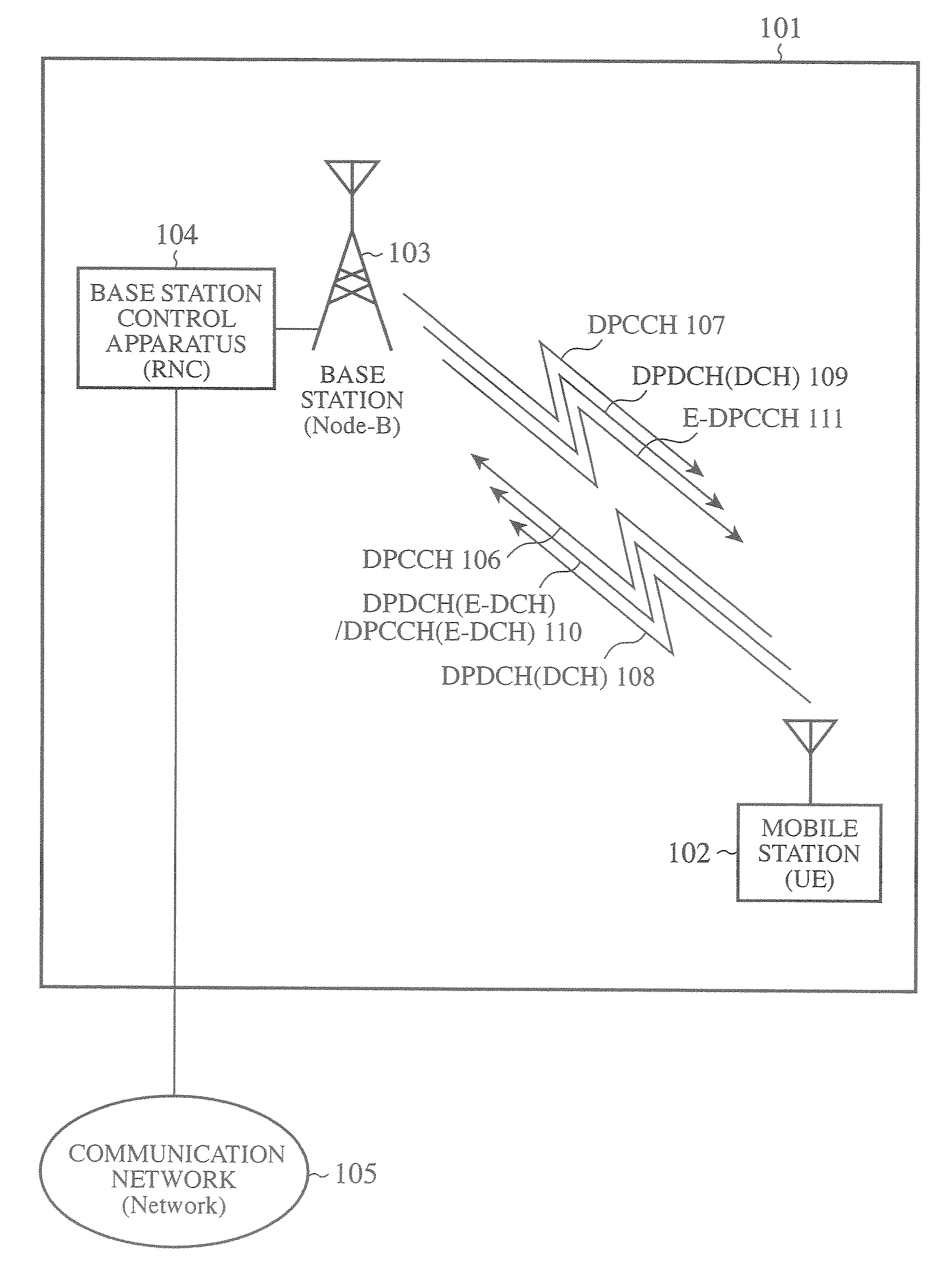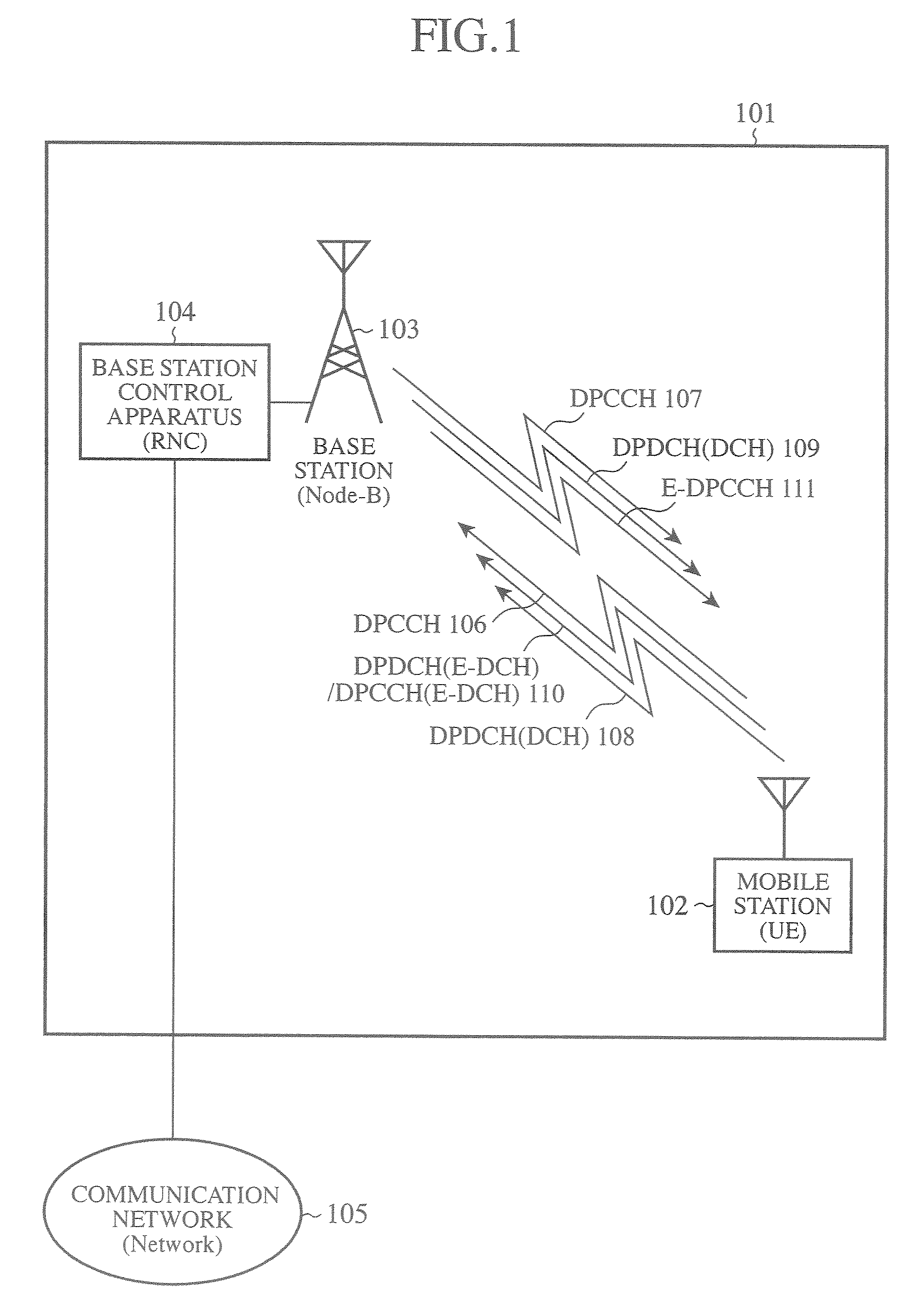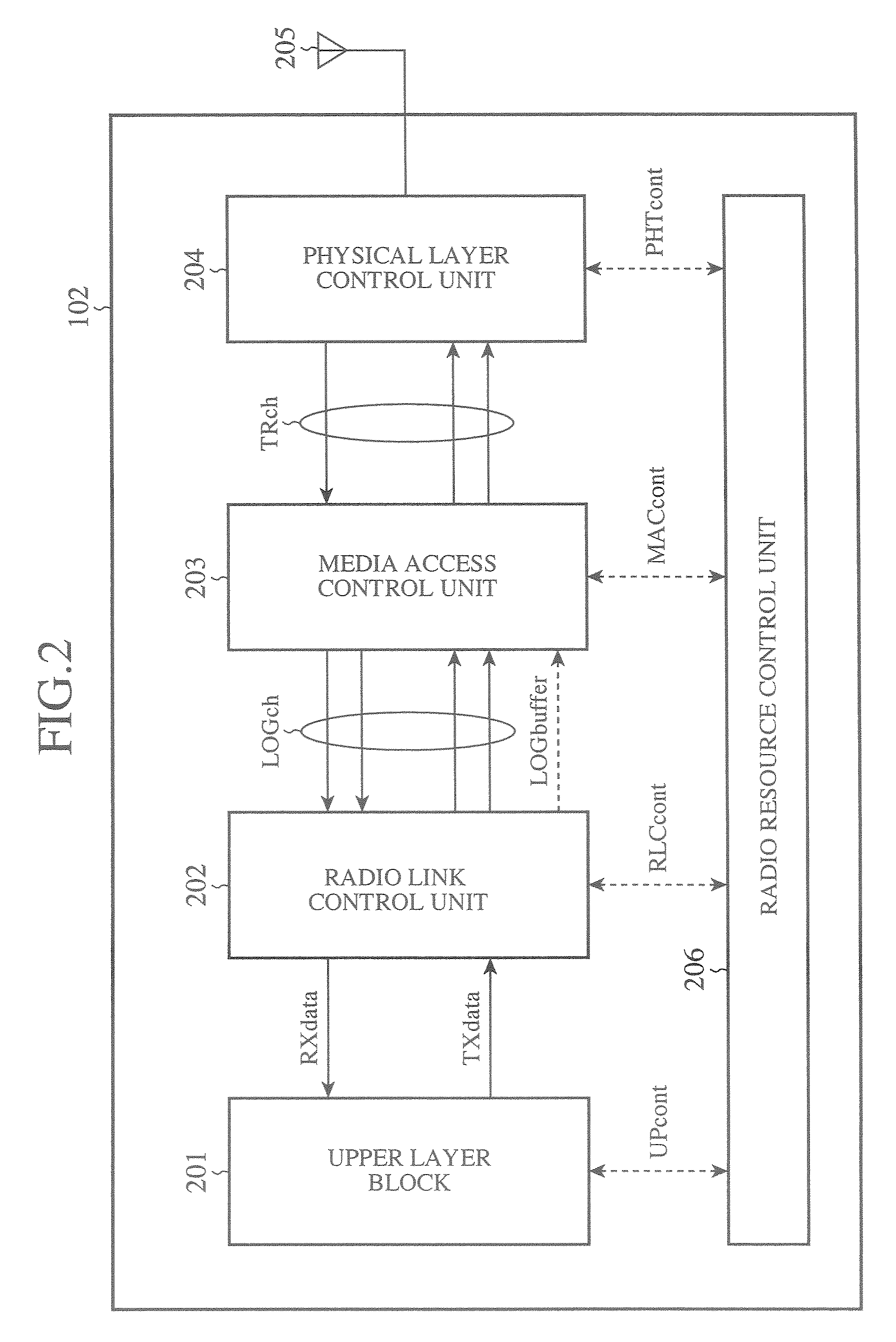Mobile Station, Base Station, Communication System, and Communication Method
a technology of applied in the field of mobile station, base station, communication system and communication method, can solve the problems of inability to carry out high-speed control of assignment of radio resources, ineffective use of radio resources, and inability to predict the amount of interference noise, so as to improve the efficiency of the communications system and improve the throughput of the whole cell.
- Summary
- Abstract
- Description
- Claims
- Application Information
AI Technical Summary
Benefits of technology
Problems solved by technology
Method used
Image
Examples
embodiment 1
[0051]FIG. 1 is a block diagram showing a communications system 101 in accordance with embodiment 1 of the present invention.
[0052] As shown in the figure, the communications system 101 is provided with a mobile station 102, a base station 103, and a base station control apparatus 104. The base station 103 communicates with two or more mobile stations 102 staying in a fixed range thereof. This communication range of this base station 103 is called a sector or cell. Only one mobile station 102 is shown in the figure.
[0053] The base station control apparatus 104 is connected to an external communication network 105, such as a public telephone network or the Internet, and relays packet communications between the base station 103 and the communication network 105.
[0054] In the W-CDMA standard, the mobile station 102 is called UE (User Equipment), the base station 103 is called Node-B, and the base station control apparatus 104 is called RNC (Radio Network Controller).
[0055] The mobi...
embodiment 2
[0203] The structures of a mobile station and a base station side in accordance with embodiment 2 are the same as those of embodiment 1.
[0204]FIG. 16 is a diagram showing the format of MAC-e PDU in accordance with embodiment 2. In the figure, (a) shows the format of the MAC-e PDU, and (b) and (c) show examples of the definition of a parameter D / C. Also in this embodiment 2, report information (TRbuffer) is multiplexed into a MAC-e header D / C is a flag showing whether only data is transmitted or control information is also transmitted in addition to data. The other parameters are the same as those of embodiment 1. There can be a case in which no MAC-e payload is transmitted. In this case, SID1 and N1 are set to zero, and only various pieces of control information for the scheduling by the base station, including the report information (TRbuffer), is transmitted as the MAC-e PDU.
[0205] In the example shown in (b), the parameter D / C is used in order to show the presence or absence of...
embodiment 3
[0212] The structures of a mobile station and a base station side in accordance with embodiment 3 are the same as those of embodiment 1.
[0213]FIG. 17 is a diagram showing the format of MAC-e PDU in accordance with embodiment 3. Also in this embodiment 3, report information (TRbuffer) is multiplexed into a MAC-e header.
[0214] In the figure, EF is a flag indicating that a combination of parameters including QueueID1 to N placed before EF is repeated behind EF. The other parameters are the same as those of embodiments 1 and 2.
[0215] In embodiment 2 the amounts of data organized according to buffers for retransmission shown by QueueID1 to QueueIDM, as well as the amounts of data organized according to logical channels are notified to the base station 103.
[0216] As shown in the figure, by combining amount-of-data information and pieces of MAC-e SDU data information (SID, N, and F) to be transmitted and multiplexing them into the header for each buffer for retransmission, the need for...
PUM
 Login to View More
Login to View More Abstract
Description
Claims
Application Information
 Login to View More
Login to View More - R&D
- Intellectual Property
- Life Sciences
- Materials
- Tech Scout
- Unparalleled Data Quality
- Higher Quality Content
- 60% Fewer Hallucinations
Browse by: Latest US Patents, China's latest patents, Technical Efficacy Thesaurus, Application Domain, Technology Topic, Popular Technical Reports.
© 2025 PatSnap. All rights reserved.Legal|Privacy policy|Modern Slavery Act Transparency Statement|Sitemap|About US| Contact US: help@patsnap.com



